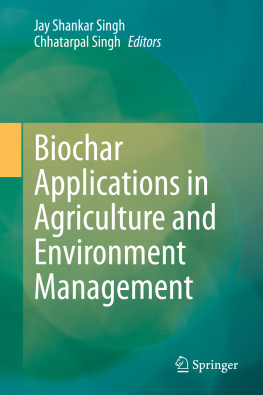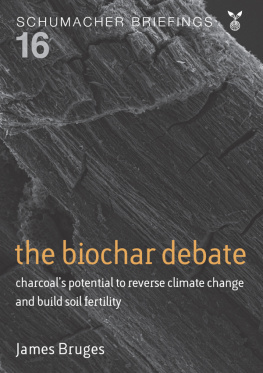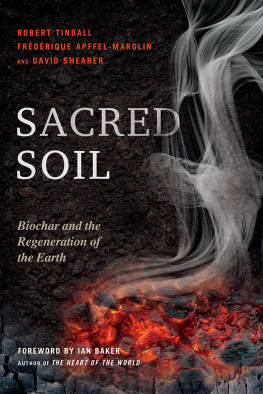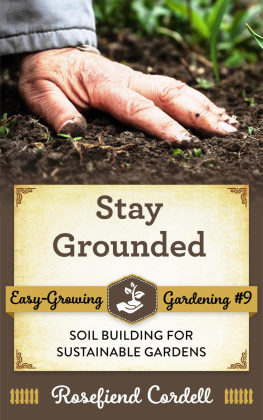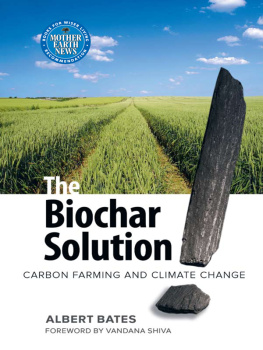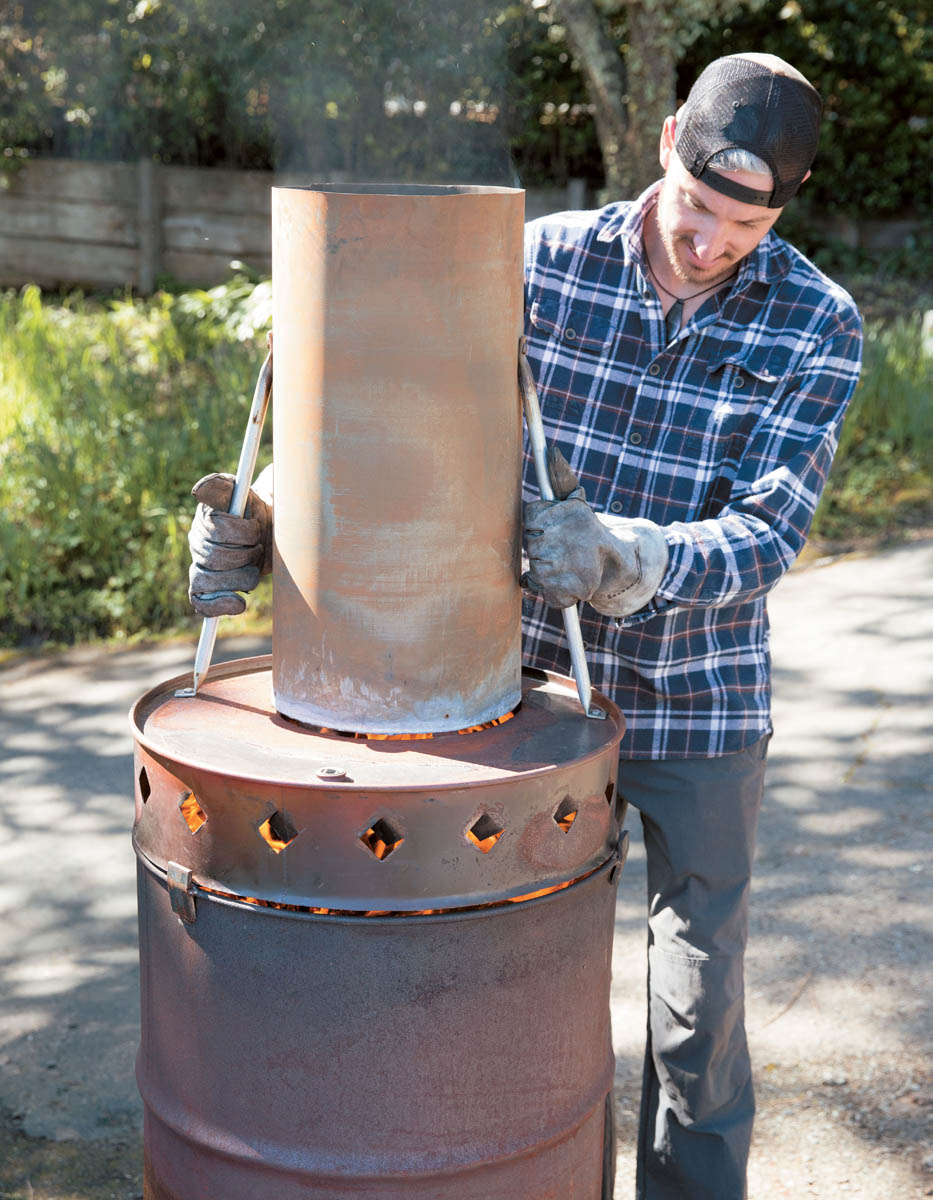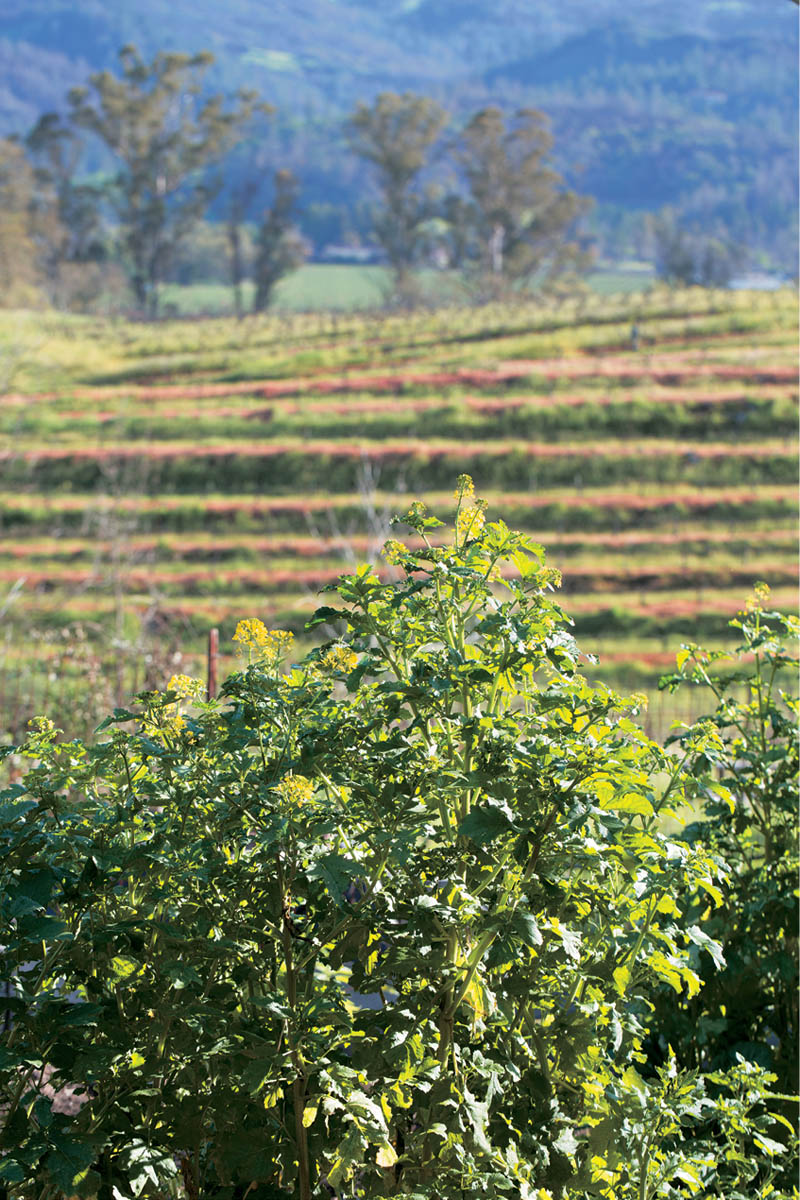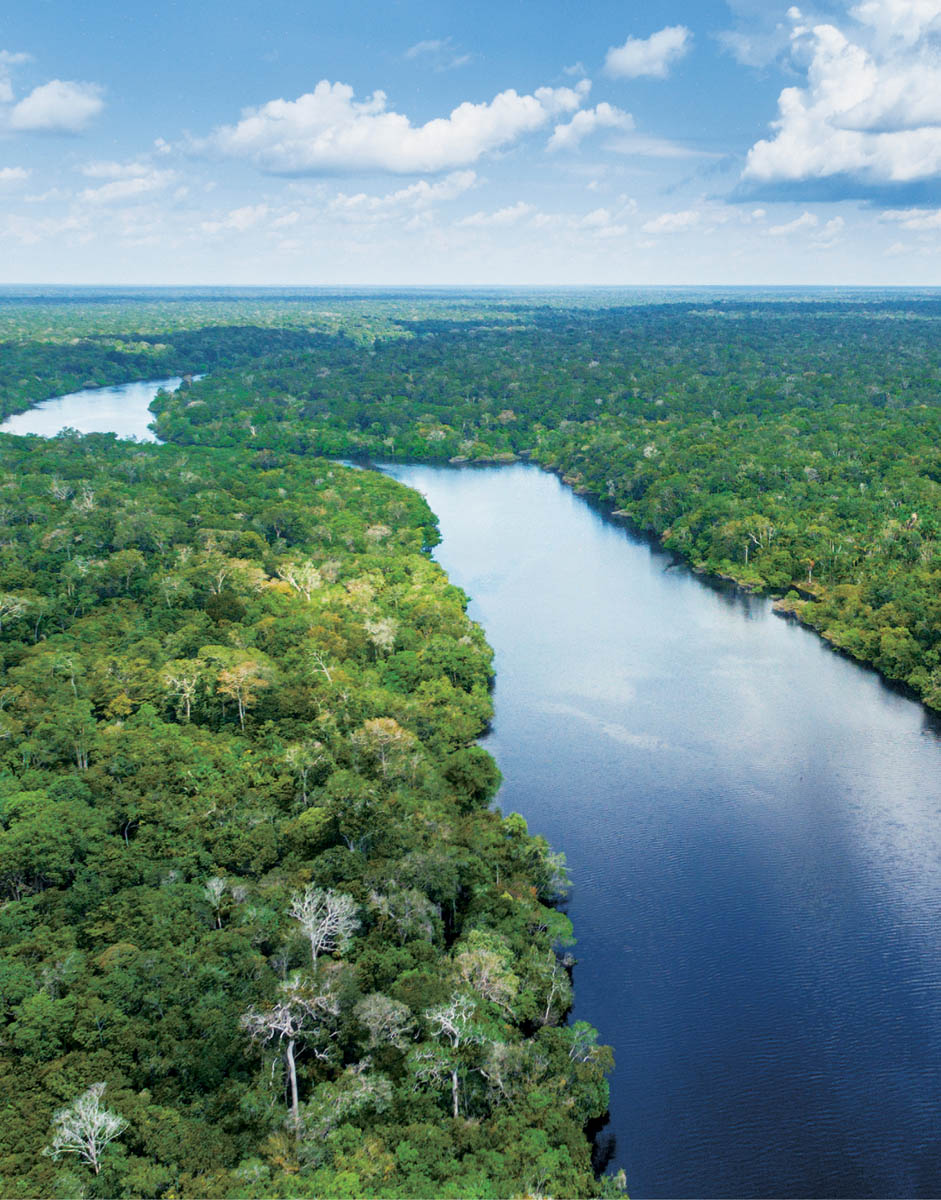Contents
Preface
supercharge your soil
Ive seen some remarkable advances in crops and gardening over the years supersweet corn, the two-handled U-bar digger but nothing with the potential to revolutionize gardening and benefit the environment like biochar.
Biochar wood and other organic matter that is roasted, not burned, to black charcoal supports life in the soil, which is the key to healthy crops. Think of it as a way to supercharge your garden soil, not because its nutrient-rich in its own right, but because it enhances the mechanical and biological processes that make for great gardens. As every savvy gardener knows, your garden is only as good as the soil its growing in.
As an added benefit, biochar keeps carbon out of the atmosphere, where it would otherwise contribute to climate change. Because its charcoal, biochar is mostly stable carbon it breaks down very, very slowly. As a result, the carbon is kept out of the atmosphere for a much longer period of time than if the original organic matter were left to decompose.
Although our Western culture has just discovered biochar in the last 20 years or so, people have been making and using it for thousands of years to turn poor soils into bountiful farms that supported whole civilizations. Despite the fact that our research into biochar is still in its infancy, we already know enough about its benefits that people around the world are beginning to create it and use it to improve their soils.
Organic gardeners will be pleased that biochars use requires no chemicals, poisons, or artificial fertilizers. In fact, biochar is actually used in soil remediation and water cleansing projects around the world. It holds soil contaminants to its surfaces, keeping them from being taken up by plants.
So enjoy learning about this remarkable substance and what it can do for you. Its a simple and very effective way to bring your garden soil to its full health and growing potential. Let me just say that in my 50 years of gardening organically, my discovery of biochar and its benefits is the single most exciting and important development Ive ever seen.
My guess is that after you read this book and start using biochar in your home garden, youll agree.
Jeff Cox
Biochar increases nutrient uptake and enhances plant growth.
Introduction
the amazing origins of Biochar
Scampering along the branches of a ficus tree 150 feet above the Amazon rainforest floor, a howler monkey breaks off a leaf for a snack, but it falls from the monkeys hand and flutters downward. When the leaf reaches the steamy ground, its immediately set upon by microbes, fungi, ants, and other ground-dwelling creatures that quickly skeletonize it and use its nutrients for food. These soil creatures lives are short, and when they die, those soluble nutrients are released into the soil. Rain carries them down to the roots of the ficus, which absorbs them and hauls them aloft to create new growth and feed more howlers.
The heat and the moisture of the rainforest mean that almost all potential plant nutrients in the jungle are part of the living ecosystem that thrives in the tree canopies and understory plants. When people cut down the trees of the Amazon forest, there is a brief window of fertility before the soil turns hard as a rock (a process known as laterization). Removal of the trees to open up areas for gardening means fewer nutrients in the soil. So, people who live there often practice slash-and-burn agriculture: they cut down the trees, then burn them to clear the area, leaving the ash to fertilize the soil. But, when the soil laterizes after a season or two, it becomes incapable of supporting gardens and field crops, so the farmers move on to fresh forest and repeat the process.
But it wasnt always that way in the jungles of the Amazon basin. Far from it.
the condition of Amazonian soils in their natural state
farming before the time of slash-and-burn
Estimates are that human beings reached South America between 15,000 and 20,000 years ago. These were hunter-gatherers who colonized the western coastal lands from Colombia down to southernmost Chile, and eastward over the Andes to the high deserts, and farther east to the Amazon River basin. About 10,000 years ago, agriculture developed in settled societies in Asia, the Fertile Crescent of the Middle East, and then in Europe. It also developed in the Americas, where farming took unique forms among the indigenous people.

Terra preta was first discovered in the Amazon River basin.
While tribal confederacies and Native American nations like the Iroquois and Cherokee were developing sophisticated governments and Central American peoples were developing corn, people living in the Amazon basin and surrounding areas were learning how to farm the poor soils of the rainforest. They learned that recycling organic matter was one key element in improving their soils. Their middens contained food wastes, human and animal manures, bones, and lots of broken crockery. Returning organic waste to the land around their encampments helped improve the soil, but because the material decomposed so quickly, soil amendment was a process that required a lot of labor and inputs in order to increase crop yields. They produced just enough food to sustain their population level.
Expansion began when the Amazon people added one more ingredient to the contents of their middens: a special kind of pyrolyzed charcoal that we now call biochar.
the discovery of biochar
When the farmers of the Amazon basin added biochar to decomposing organic matter, something amazing happened. Fields and gardens sprang to life. Over time, the poor soil of the Amazon became dark, porous, and extremely fertile. Its called terra preta, black earth in Portuguese.
Some archeologists cautiously estimate that between 450 BCE and 950 CE, natives of the Amazon basin and surrounding areas improved so much soil that this black earth covers an area the size of France. Others claim theres evidence that the Amazon landscape was not just wild jungle, but that parts were managed by humans for many millennia BCE and as late as 1250 CE.
With the discovery of pyrolyzed charcoal as a soil supplement, the food of the native peoples wasnt limited to whatever they could glean from the forest. This had a profound effect on the Amazon population. When people learned to improve soil fertility, populations grew because they could raise more food.




